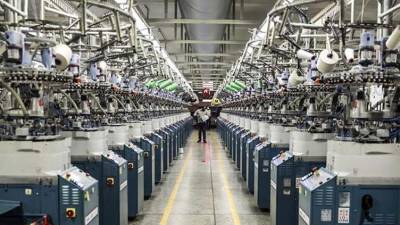LSM growth speeds up in December
The LSM sector grew by 6.4 percent in December 2021 over corresponding month of last year
Correspondent
February 18, 2022
Fiscal year 2015/16 is the base year for the latest numbers of LSM growth. -
ISLAMABAD: Large-scale manufacturing (LSM) sector grew faster than expected in December, supported by stronger auto and textile productions but high price inflation could weigh on factories output in months ahead.
The LSM sector grew by 6.4 percent in December 2021 over corresponding month of last year and 10.5 percent over previous month, showing a healthy performance almost in all categories, Pakistan Bureau of Statistic (PBS) reported on Thursday.
Fiscal year 2015/16 is the base year for the latest numbers of LSM growth.
Analysts said subsidized energy, easy raw material imports and comparatively low cost of borrowing helped boost the industrial activities. LSM accounts for 80 percent of manufacturing sector.
During the first half (July-Dec) of the current financial year, the LSM sector growth arrived at 7.4 percent over same period of the last fiscal.
Food, beverages, tobacco, textile, wearing apparel, leather products, paper & board, coke & petroleum products, chemicals, iron & steel products, fabricated metal, machinery and equipment, automobiles and furniture showed strong production growth during the period.
However, production of fertilizer, pharmaceuticals, rubber products and electronics declined during the first six months of fiscal 2021/22.
The LSM sector growth arrived at 3.8 percent in December 2021 over corresponding month of last year and 16.7 percent over previous month according to the previous base year of fiscal 2005/06
Whereas, July-Dec 2021/22 average LSM growth recoded at 3.4 percent over same period of the last fiscal.
Oil Companies Advisory Council, logging outputs of 11 oil and petroleum products, measured growth of 0.10 percent year-over-year in outputs in July-Dec FY22. In December 2021, it however declined by 1.6 percent over same month of last year and negative 0.5 percent over previous month.
Ministry of industries, measuring output trend of 36 items, recorded a 3.2 percent growth in production in first-half of FY22. In December 2021, it grew by 5.0 percent over corresponding month and 10.7 percent over November 2021.
Provincial bureau of statistics, counting production of 65 products, recorded 4.1 percent growth in July-Dec 2021/22 over corresponding period of FY21. In December, its output increased 3.1 percent over corresponding month 0.3 percent over previous month.
During July-December FY22, food sector grew 1.3 percent, beverages 4.3 percent, tobacco 50.8 percent, textiles 2.8 percent, wearing apparels 20.5 percent, leather products 6.8 percent, wood products 292 percent, paper & board 8.3 percent, coke and petroleum products 0.7 percent, chemical products 14.1 nonmetallic products 1.8 percent, iron & steel products 18.4 percent, machinery & equipment 15.3 percent, automobiles 69.4 percent, furniture 594 percent and other manufacturing (football) 19.1 percent over last year.
However, production of fertilizer declined 3.8 percent, fabricated metal minus 4.3 percent and computer, electronics and Optical products reduced by 3.3 percent. Besides, pharmaceuticals output also reduced by 4.9 percent, rubber products 28.3 percent and electronics production down by 1.3 percent during first half.
On year-on-year basis, food sector grew 3.3 percent, beverages minus 0.3 percent, tobacco 50.8 percent, textiles minus 0.9 percent, wearing apparels 17.3 percent, leather products 5.4 percent, wood products 478.4 percent, paper & board 7.7 percent, coke and petroleum products minus 21.6 percent, chemical products 2.5 percent, fertilizer up 6.3 percent, nonmetallic products 6 percent, iron & steel products 13.4 percent, fabricate metals minus 6.1 percent, computer, electronics and optical products reduced by 24.1 percent, machinery & equipment 16.4 percent, automobiles 83.1 percent, furniture 181.3 percent and other manufacturing (football) 31.1 percent.
Pharmaceuticals output reduced by 13.6 percent, rubber products 5.8 percent while electronics production up by 56.1 percent over same month of last year.







